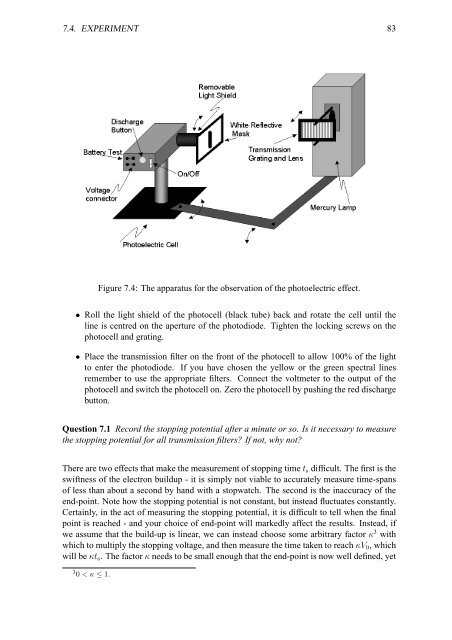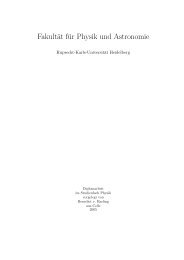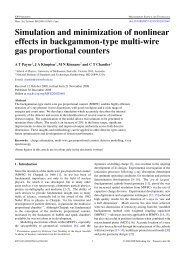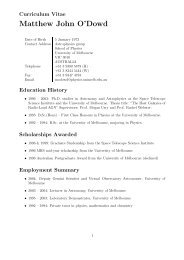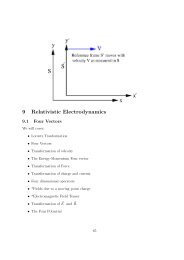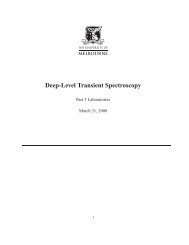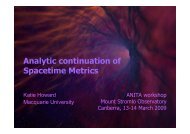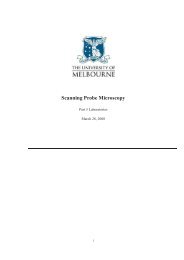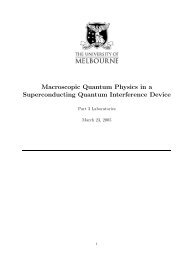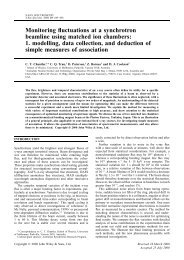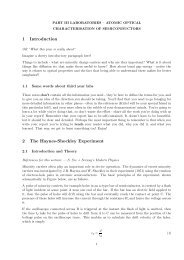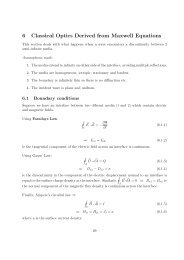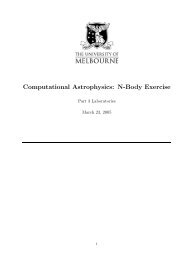Bibliography - School of Physics - University of Melbourne
Bibliography - School of Physics - University of Melbourne
Bibliography - School of Physics - University of Melbourne
Create successful ePaper yourself
Turn your PDF publications into a flip-book with our unique Google optimized e-Paper software.
7.4. EXPERIMENT 83<br />
Figure 7.4: The apparatus for the observation <strong>of</strong> the photoelectric effect.<br />
• Roll the light shield <strong>of</strong> the photocell (black tube) back and rotate the cell until the<br />
line is centred on the aperture <strong>of</strong> the photodiode. Tighten the locking screws on the<br />
photocell and grating.<br />
• Place the transmission filter on the front <strong>of</strong> the photocell to allow 100% <strong>of</strong> the light<br />
to enter the photodiode. If you have chosen the yellow or the green spectral lines<br />
remember to use the appropriate filters. Connect the voltmeter to the output <strong>of</strong> the<br />
photocell and switch the photocell on. Zero the photocell by pushing the red discharge<br />
button.<br />
Question 7.1 Record the stopping potential after a minute or so. Is it necessary to measure<br />
the stopping potential for all transmission filters? If not, why not?<br />
There are two effects that make the measurement <strong>of</strong> stopping time t s difficult. The first is the<br />
swiftness <strong>of</strong> the electron buildup - it is simply not viable to accurately measure time-spans<br />
<strong>of</strong> less than about a second by hand with a stopwatch. The second is the inaccuracy <strong>of</strong> the<br />
end-point. Note how the stopping potential is not constant, but instead fluctuates constantly.<br />
Certainly, in the act <strong>of</strong> measuring the stopping potential, it is difficult to tell when the final<br />
point is reached - and your choice <strong>of</strong> end-point will markedly affect the results. Instead, if<br />
we assume that the build-up is linear, we can instead choose some arbitrary factor κ 3 with<br />
which to multiply the stopping voltage, and then measure the time taken to reach κV 0 , which<br />
will be κt s . The factor κ needs to be small enough that the end-point is now well defined, yet<br />
3 0 < κ ≤ 1.


